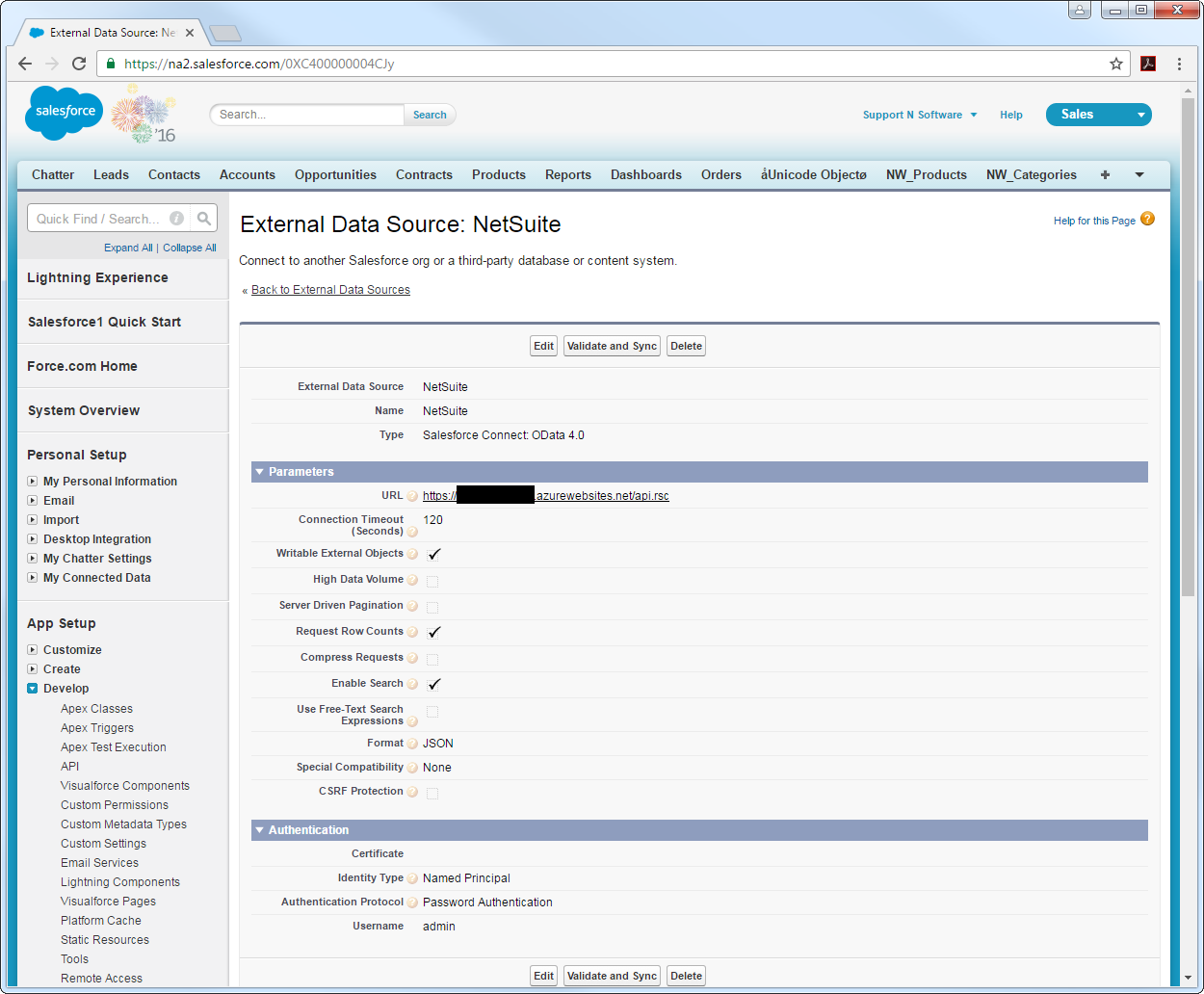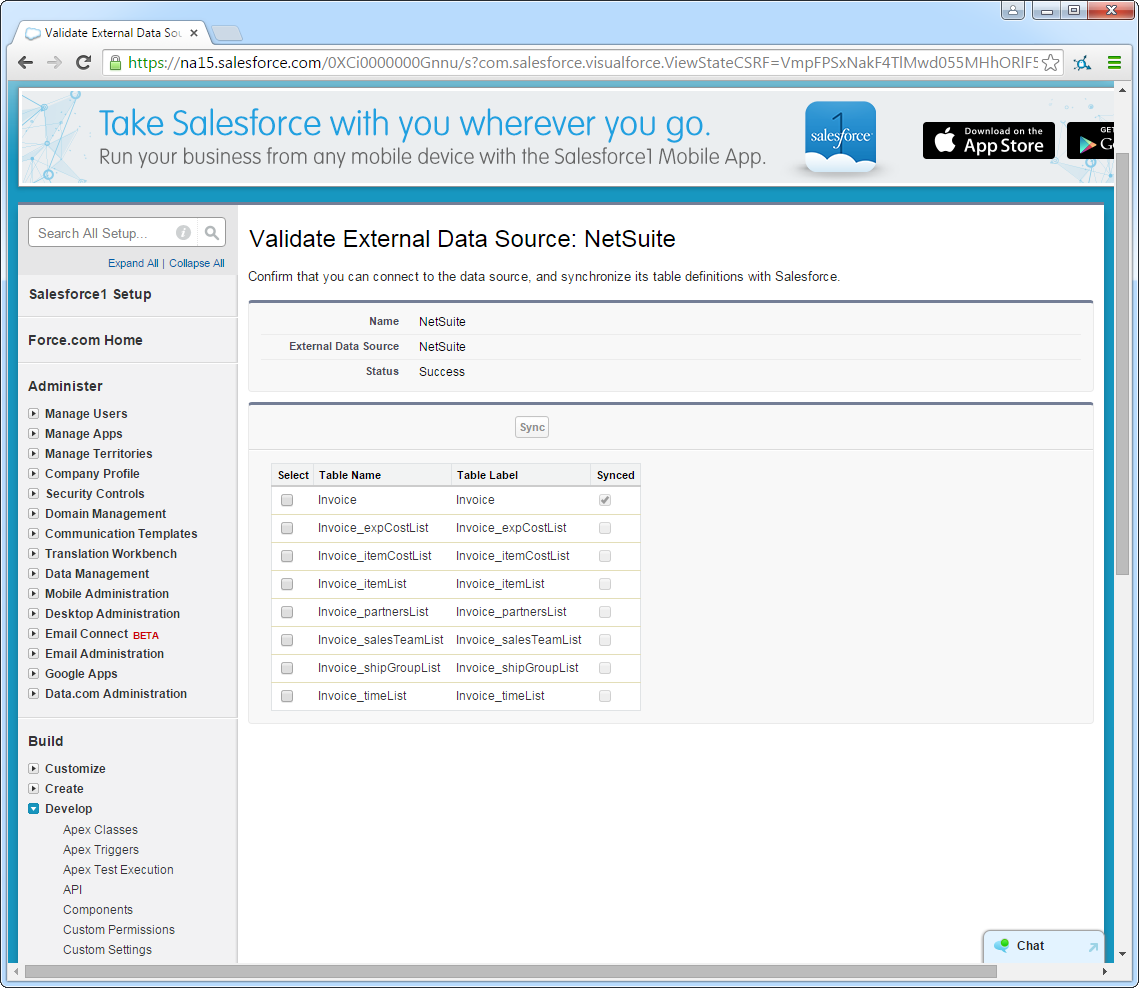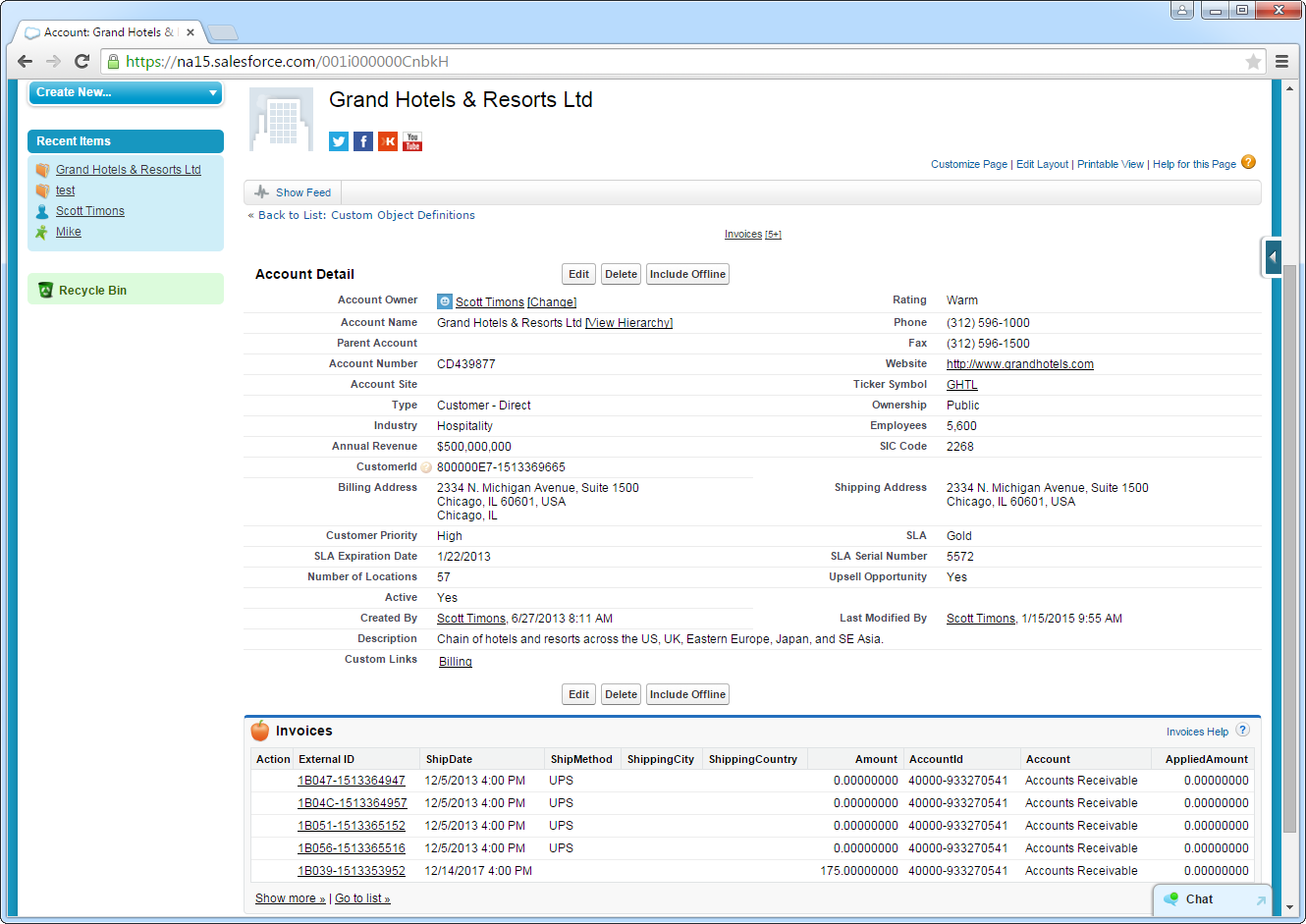Discover how a bimodal integration strategy can address the major data management challenges facing your organization today.
Get the Report →Edit and Search Adobe Commerce External Objects
Use the API Server to securely provide OData feeds of Adobe Commerce data to smart devices and cloud-based applications. Use the API Server and Salesforce Connect to create Adobe Commerce objects that you can access from apps and the dashboard.
The CData API Server, when paired with the (or any of 200+ other ADO.NET Providers), enables you to access Adobe Commerce data from cloud-based applications like the Salesforce console and mobile applications like the Salesforce1 Mobile App. In this article, you will use the API Server and Salesforce Connect to access Adobe Commerce external objects alongside standard Salesforce objects.
Set Up the API Server
Follow the steps below to begin producing secure Adobe Commerce OData services:
Deploy
The API Server runs on your own server. On Windows, you can deploy using the stand-alone server or IIS. On a Java servlet container, drop in the API Server WAR file. See the help documentation for more information and how-tos. You can find guides to deploying the API Server on Azure, Amazon EC2, and Heroku in the CData KB.
Connect to Adobe Commerce
After you deploy the API Server and the , provide authentication values and other connection properties needed to connect to Adobe Commerce by clicking Settings -> Connection and adding a new connection in the API Server administration console.
Adobe Commerce uses the OAuth 1 authentication standard. To connect to the Adobe Commerce REST API, you will need to obtain values for the OAuthClientId, OAuthClientSecret, and CallbackURL connection properties by registering an app with your Adobe Commerce system. See the "Getting Started" section in the help documentation for a guide to obtaining the OAuth values and connecting.
You will also need to provide the URL to your Adobe Commerce system. The URL depends on whether you are using the Adobe Commerce REST API as a customer or administrator.
Customer: To use Adobe Commerce as a customer, make sure you have created a customer account in the Adobe Commerce homepage. To do so, click Account -> Register. You can then set the URL connection property to the endpoint of your Adobe Commerce system.
Administrator: To access Adobe Commerce as an administrator, set CustomAdminPath instead. This value can be obtained in the Advanced settings in the Admin menu, which can be accessed by selecting System -> Configuration -> Advanced -> Admin -> Admin Base URL.
If the Use Custom Admin Path setting on this page is set to YES, the value is inside the Custom Admin Path text box; otherwise, set the CustomAdminPath connection property to the default value, which is "admin".
You can then choose the Adobe Commerce entities you want to allow the API Server access to by clicking Settings -> Resources.
Authorize API Server Users
After determining the OData services you want to produce, authorize users by clicking Settings -> Users. The API Server uses authtoken-based authentication and supports the major authentication schemes. Access can also be restricted based on IP address; by default, only connections to the local machine are allowed. You can authenticate as well as encrypt connections with SSL.
Connect to Adobe Commerce Data as an External Data Source
Follow the steps below to connect to the feed produced by the API Server.
- Log into Salesforce and click Setup -> Develop -> External Data Sources.
- Click New External Data Source.
- Enter values for the following properties:
- External Data Source: Enter a label to be used in list views and reports.
- Name: Enter a unique identifier.
- Type: Select the option "Salesforce Connect: OData 4.0".
URL: Enter the URL to the OData endpoint of the API Server. The format of the OData URL is https://your-server:your-port/api.rsc.
Note that plain-text is suitable for only testing; for production, use TLS.
- Select the Writable External Objects option.
Select JSON in the Format menu.
- In the Authentication section, set the following properties:
- Identity Type: If all members of your organization will use the same credentials to access the API Server, select "Named Principal". If the members of your organization will connect with their own credentials, select "Per User".
- Authentication Protocol: Select Password Authentication to use basic authentication.
- Certificate: Enter or browse to the certificate to be used to encrypt and authenticate communications from Salesforce to your server.
- Username: Enter the username for a user known to the API Server.
- Password: Enter the user's authtoken.

Synchronize Adobe Commerce Objects
After you have created the external data source, follow the steps below to create Adobe Commerce external objects that reflect any changes in the data source. You will synchronize the definitions for the Adobe Commerce external objects with the definitions for Adobe Commerce tables.
- Click the link for the external data source you created.
- Click Validate and Sync.
- Select the Adobe Commerce tables you want to work with as external objects.

Access Adobe Commerce Data as Salesforce Objects
After adding Adobe Commerce data as an external data source and syncing Adobe Commerce tables with Adobe Commerce external objects, you can use the external objects just as you would standard Salesforce objects.
-
Create a new tab with a filter list view:
![A filtered list view shown on a custom tab. (NetSuite Invoices are shown.)]()
-
Display related lists of Adobe Commerce external objects alongside standard Salesforce objects:
![A related list that shows an indirect lookup relationship, which links a child external object to a parent standard object. (Salesforce accounts and associated NetSuite invoices are shown.)]()
-
Create, read, update, and delete Adobe Commerce objects from tabs on the Salesforce dashboard:
![Editing external objects from the Salesforce dashboard. (NetSuite Employees are shown.)]()
Troubleshooting
You can use the following checklist to avoid typical connection problems:
- Ensure that your server has a publicly accessible IP address. Related to this check, but one layer up, at the operating system layer, you will also need to ensure that your firewall has an opening for the port the API Server is running on. At the application layer, ensure that you have added trusted IP addresses on the Settings -> Security tab of the administration console.
- Ensure that you are using a connection secured by an SSL certificate from a commercial, trusted CA. Salesforce does not currently accept self-signed certificates or internal CAs.
Ensure that the server you are hosting the API Server on is using TLS 1.1 or above. If you are using the .NET API Server, you can accomplish this by using the .NET API Server's embedded server.
If you are using IIS, TLS 1.1 and 1.2 are supported but not enabled by default. To enable these protocols, refer to the how-to on MSDN and the Microsoft technical reference.
If you are using the Java edition, note that TLS 1.2 is enabled by default in Java 8 but not in Java 6 or 7. If you are using these earlier versions, you can refer to this this Oracle how-to.









